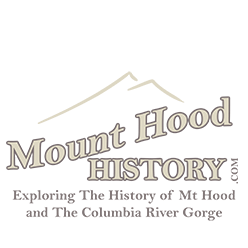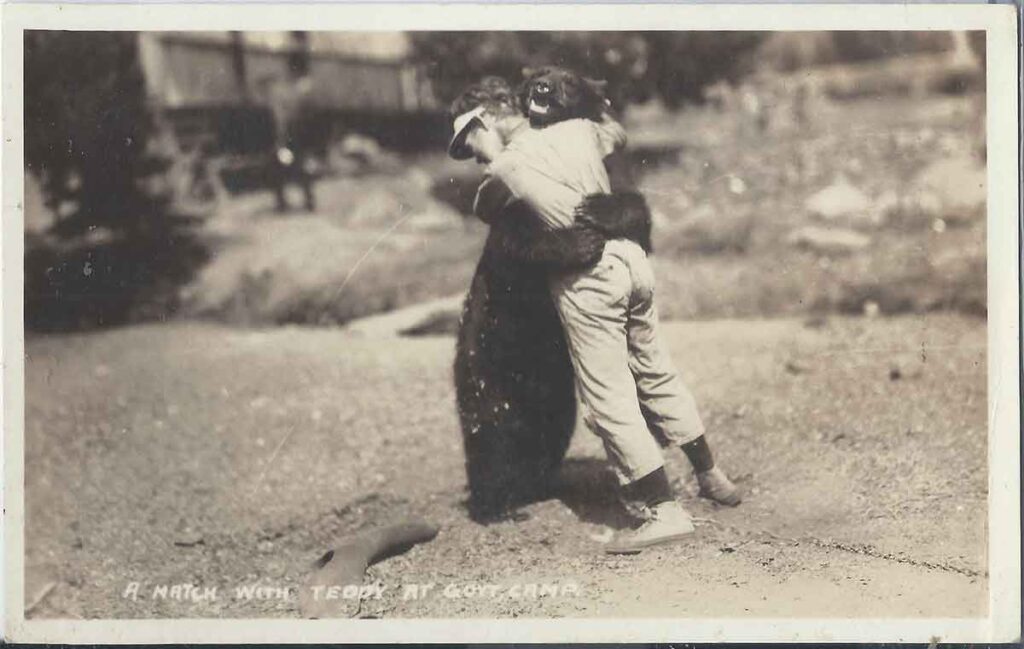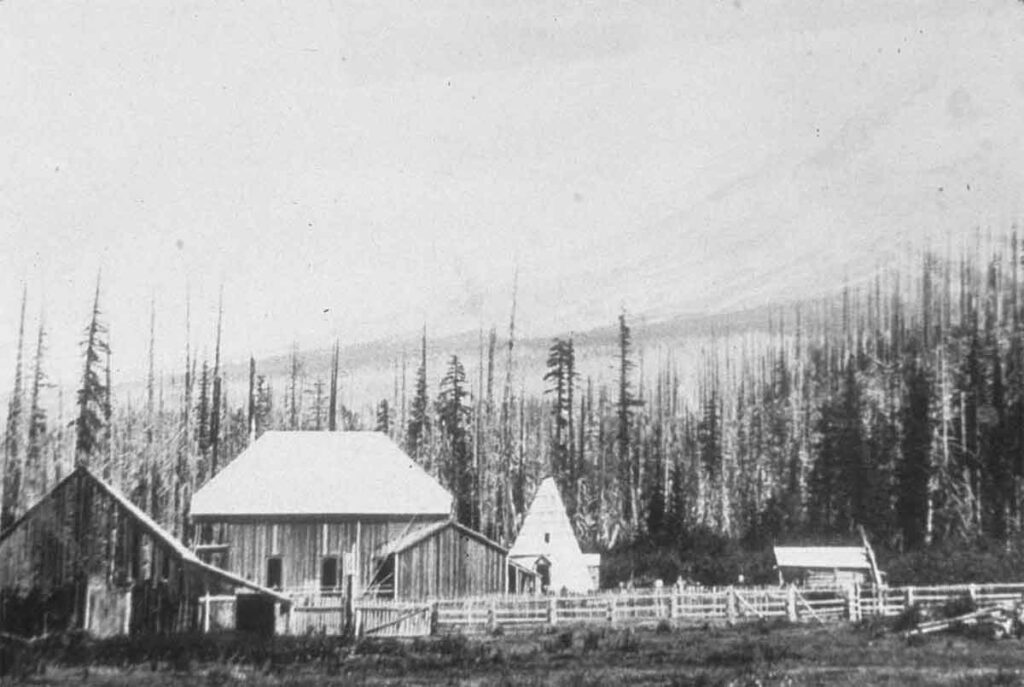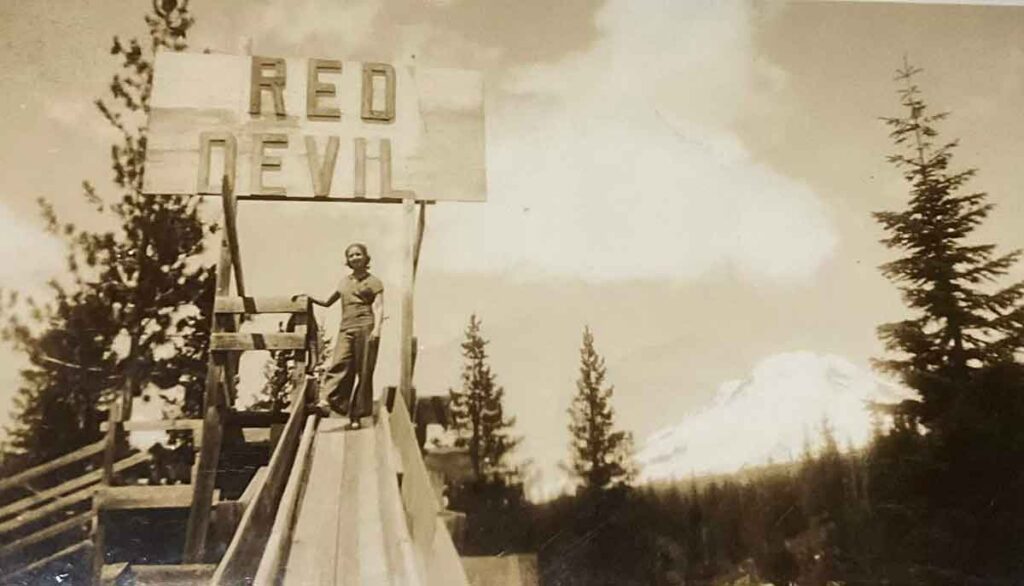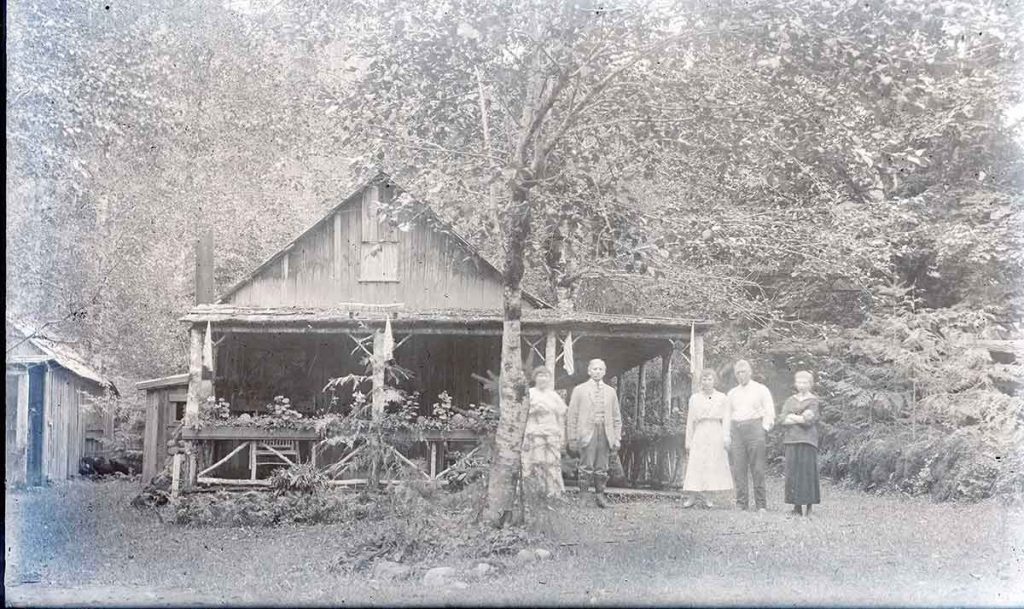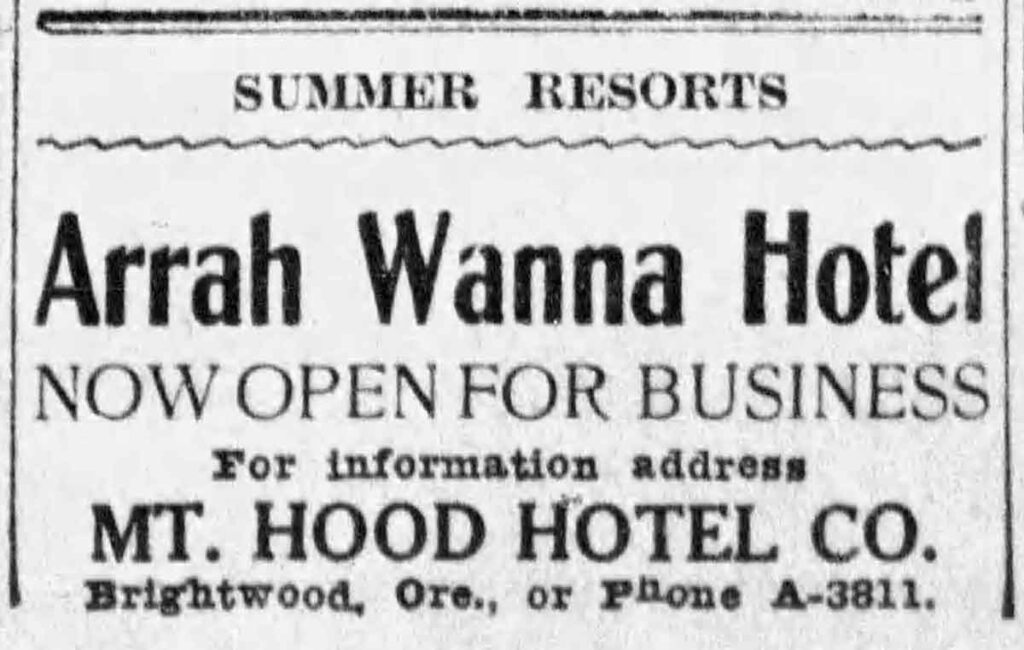When Live Bears Entertained Tourists Pet Bears Were Once a Common Sight at Government Camp In the 1920s and ’30s, tourists came to Mount Hood for snow, scenery, and rustic lodging. But for a short time, they also came to see the Government Camp bears. Lodges in Government Camp kept live bear cubs on-site. These … Continue reading Government Camp Bears: Mount Hood’s Forgotten Mascots
Category: Historic Photos
Summit Meadow Pioneer Cemetery
Near Government Camp, Oregon, within view of Mount Hood, at the Summit Meadow Pioneer Cemetery
The Red Devil Toboggan Slide
In the early days of winter recreation on Mount Hood, long before chairlifts and ski resorts, Government Camp was home to an exhilarating and dangerous attraction—the Red Devil Toboggan Slide.
Historic Glass Plate Negatives
This is an early view of when Billy Welch’s Ranch was in transition from a camp ground to an era of summer cabins.
Arrah Wanna Hotel in Wemme Oregon
Nestled in the picturesque surroundings of the Salmon River in Wemme, Oregon sits the Arrah Wanna Lodge
